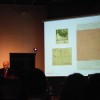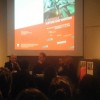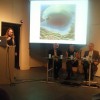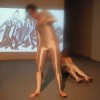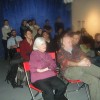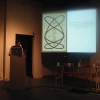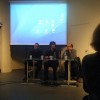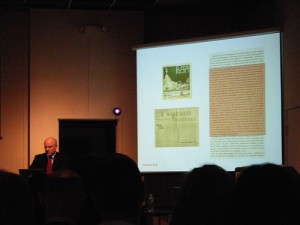
A cold morning in Philadelphia welcomed the participants of the “Futurism: Rupture and Tradition” conference organized by Christine Poggi and Fabio Finotti and held at the Slought Foundation, November 21-22, 2008. Following opening remarks, a packed room greeted key-note speaker Jeffrey Schnapp, who spoke of the new mythology of speed and the psychology of ‘thrill’. A presentation by Luca Somigli about Marinetti’s symbolist values was followed by Ara Merjian, who began by projecting a photograph of onlookers crowded around a Boccioni painting on display in a bookstore to advertise the Futurist exhibition at the Costanzi gallery. Merjian examined the Futurist injection of life into art and visa-versa as he discussed assemblage, the “Futurist Reconstruction of the Universe”, and the totality of design. Merjian takes the initial desire of the Futurists’ to impose their design on all aspects of life to the final conclusion of advertising co-opting representations of Futurism. This paper tied in nicely with the following day’s presentation by Guido Bartorelli, who focused on Futurist advertising paintings by Depero, the language of advertising and propaganda, and the Futurists’ participation in the Venice Biennale in 1926.
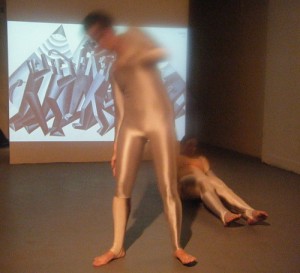
Next to present were Jonathan Steinberg on “Futurism and the European Revolt Against Reason: 1890-1915” and Christine Poggi on “The Futurist Noise Machine”. Stefania Benini spoke about Benedetta Cappa Marinetti’s images and text from her first novel which reflected themes of love, war and nature. Marion Kant presented the day’s last paper, arguing that Marinetti dropped the ball when it came to prescribing an innovative form of futurist dance. Kant said that his knowledge of modernist dance was limited and succumbed to historical hierarchy of this art, based on an analysis of his Manifesto of Futurist Dance (1917). This paper was followed by an interpretation of Marinetti’s ideas of dance by Christina Catanese and Julia Cuccaro, who performed in silver painted unitards to music by Wolf Eyes. As the audience followed the performers from one room to the other, the dancers, while themselves unseen, were ultimately projected onto a screen, thus culminating the transformation from merely imitating machines to becoming themselves technology.
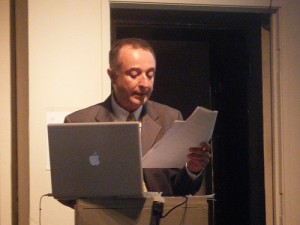
Saturday morning began with a paper from Maria Elena Versari who argued for a revision of the influence of Futurism on the Dada movement, following various critical threads presented by other scholars. Paolo Valesio made an interesting comparison between William S. Burroughs’ The Soft Machine and Marinetti’s “Against Venice,” noting their obsessive repetitiveness, sexualization of the machine, primitive historicism, and chemical rhetoric. Valesio compared the technological revolution of Venice and the decadence of Burroughs’ 1960s. Fabio Finotti spoke clearly about the iconic use of numbers in Futurist art and projected Balla’s Numbers in Love (which has always been one of this reporter’s favorite works). Finotti argued that numbers represented a new perception of matter not as mass but as energy with metaphysical connotations relevant to the work of Calvino, Escher and Dottori. This thread was picked-up in the post-lecture discussion. Kevin Platt presented along with a dynamic slide show on the poetic representation of monuments by Mayakovsky and the modernist struggle with history. Last but not least, the symposium was finished out by the multi-media artist Luca Buvoli, who, after briefly discussing his work, showed his film for the installation of A Very Beautiful Day After Tomorrow and Velocity Zero (English excerpt) for the remaining (though by this point diminished) audience.
Overall, the discussions following the presentations could have delved a bit deeper into the arguments and often focused on the last paper presented rather than the entirety of each panel. However, the papers presented tied in nicely with one another and the symposium flowed extremely (and surprisingly) punctually and smoothly.
